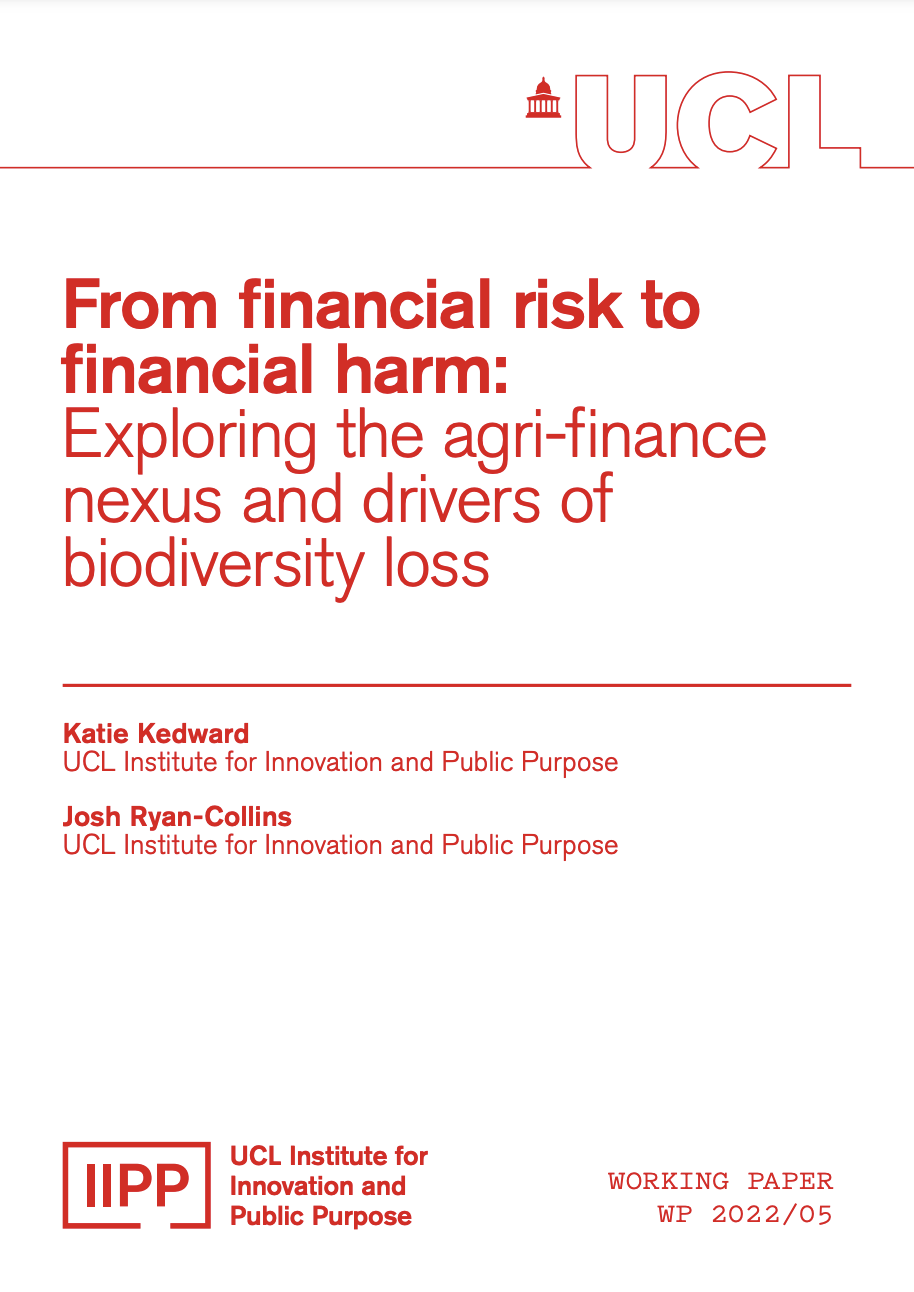From financial risk to financial harm: Exploring the agri-finance nexus and drivers of biodiversity loss
From financial risk to financial harm: Exploring the agri-finance nexus and drivers of biodiversity loss
24 March: There is growing awareness amongst both financial policy makers and financial institutions of the need to better understand the links between the financial system and biodiversity loss. Central banks and financial supervisors have so far focused more on the risks posed by biodiversity loss to the financial system (“financial materiality”) than the impacts of finance on biodiversity (“environmental materiality”). In the wider biodiversity-finance sphere, the emphasis has been on the creation of new financial products or investment opportunities associated with the restoration of nature or offsetting damages – so called ‘nature-based solutions’. Less attention has been paid to the institutional relations that connect macro-financial and ecological systems and the growing importance of financial actors, incentives, and practices in shaping human demands upon the biosphere.
In this context, we study the agri-finance nexus and find that finance-oriented practices such as maximizing agricultural land productivity, realising capital gains, and achieving scale are systemically associated with land-use change and intensive agricultural practices that drive biodiversity loss and degradation. Importantly for policy makers, these findings indicate the financial sector to be indirectly contributing to the threat of breaching critical ecological tipping points, which would pose systemic macrofinancial risks. Central banks and supervisors should focus their attention on encouraging the avoidance of such practices by employing both monetary and (macro-)prudential policy toolkits. Given such activity falls outside the sphere of standard financial regulation, to do so will require greater coordination with other government departments, including environment agencies as well as international financial agencies.
Authors
Publisher
Published March 24, 2022


